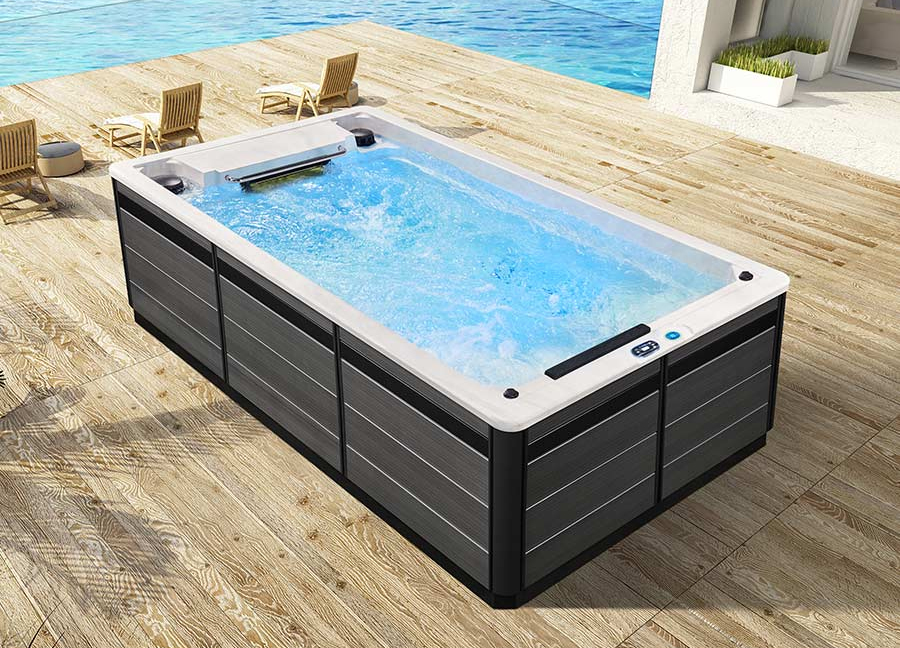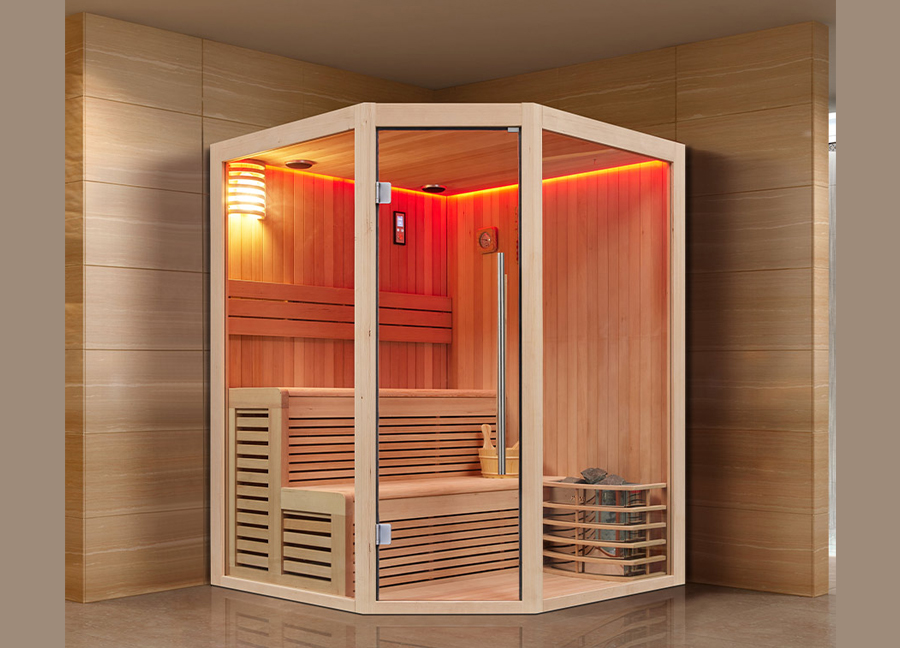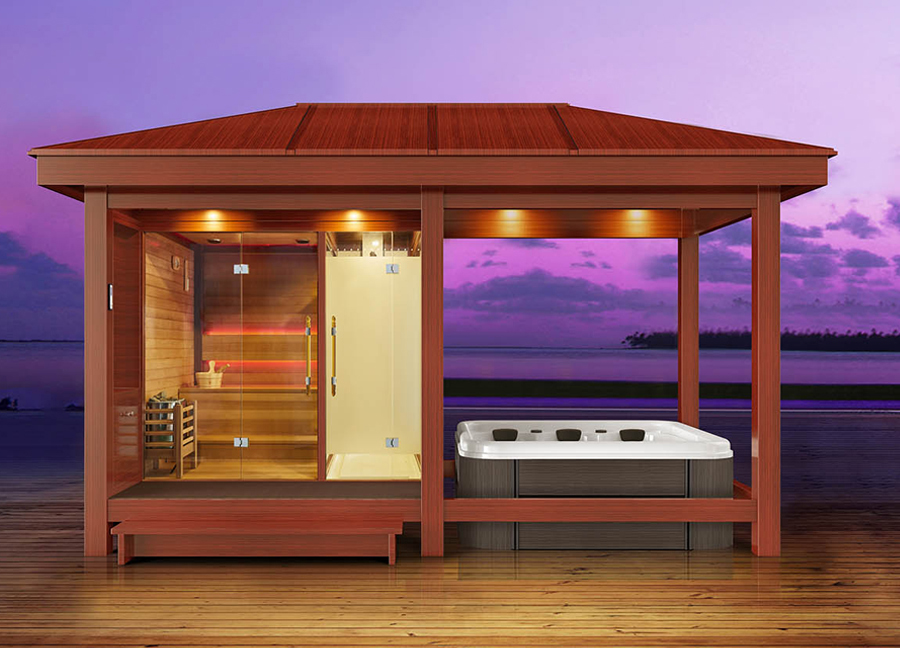With its unique water massage function and constant-temperature spa experience, the hydromassage whirlpool tub is an ideal choice for modern family relaxation and leisure.
During routine maintenance, many users encounter a seemingly simple yet crucial question: "Should the jets be run when performing a shock treatment on the hydromassage whirlpool tub?"
This seemingly minor question is actually closely related to water quality safety, chemical distribution, system protection, and disinfection efficiency.
Improper operation can not only lead to unsatisfactory shock treatment results but may also damage the equipment or cause chemical reaction problems.
This article will delve into this question from the working principle of the hydromassage whirlpool tub, water chemical balance, and the scientific principles of shock treatment, providing you with the most scientific and reasonable answer.
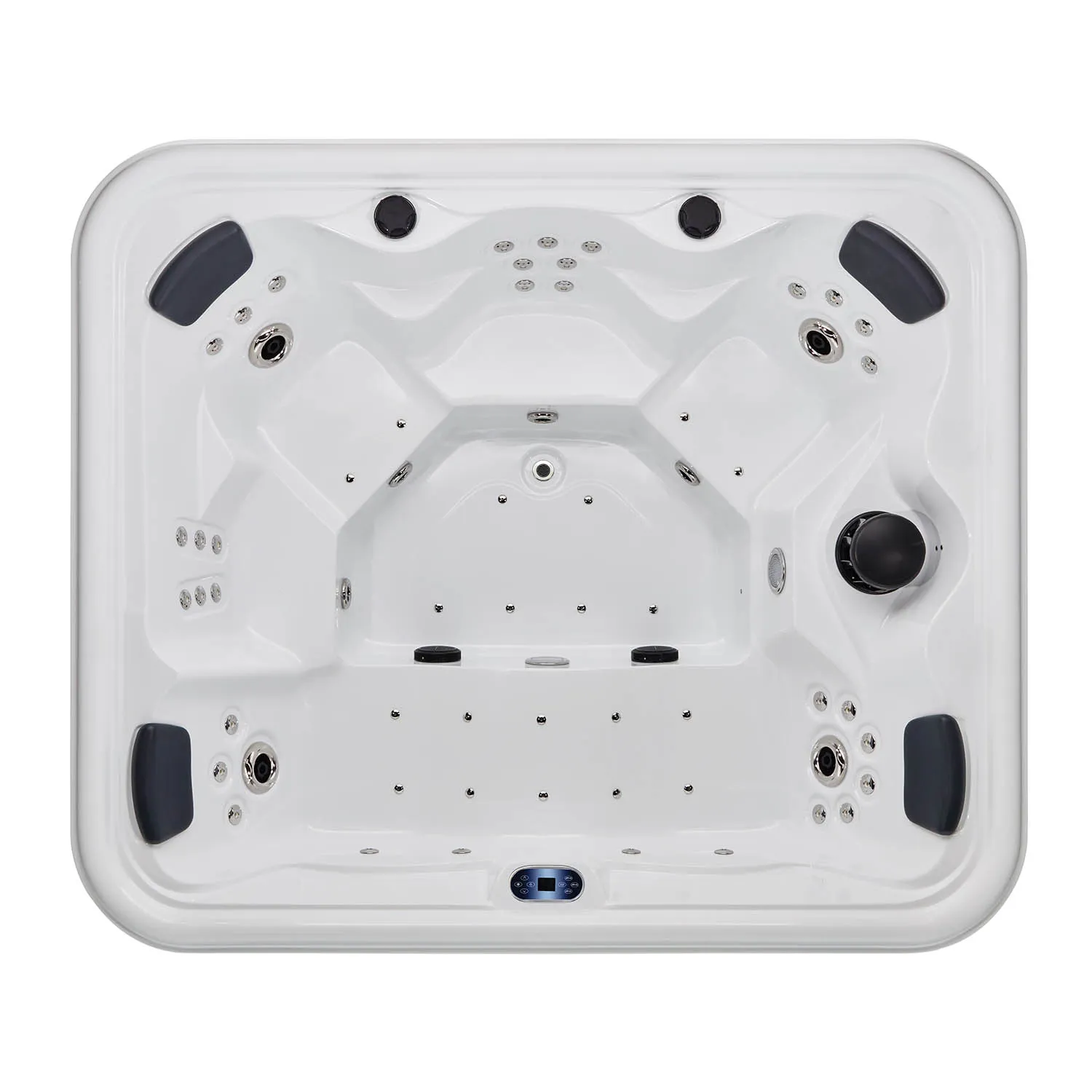
Hydromassage whirlpool tub: Why perform shock treatment?
Shock treatment refers to the process of adding a high concentration of oxidants or chlorine agents to a hydromassage whirlpool tub for a short period of time to decompose organic matter, eliminate chloramines, kill bacteria, and restore water clarity.
This process is typically performed under the following conditions:
• The water becomes cloudy or has an odor;
• The water body becomes contaminated after multiple uses;
• The chlorine or bromine content is insufficient;
• During weekly deep cleaning.
The purpose of shock treatment is to "reset" the water quality, returning it to a safe, clean, and transparent state.
The most commonly used chemicals in shock treatment include:
• Chlorine-based shock agents
• Non-chlorine shock agents (primarily persulfates)
What role do the jets play in the hydromassage whirlpool tub system?
The jets are one of the most crucial components of the hydromassage whirlpool tub.
It uses a pump to mix water and air, creating a powerful jet effect for a massage.
But besides relaxing muscles, the jet spray has another function often overlooked by users—aiding water circulation and chemical distribution.
The basic functions of a jet spray system include:
• Promoting water flow and preventing chemical deposition;
• Evenly dispersing disinfectants or shock agents;
• Reducing dead zones and improving oxidation efficiency;
• Assisting the filtration system and improving overall circulation performance.
Therefore, the operating status of the jet spray directly affects whether the shock agent can be evenly distributed in the water.

Should the jet spray be run during a hydromassage whirlpool tub?
✅ Short answer:
Yes, the jet spray should be run during a shock treatment.
However, it is important to note that the operating time, intensity, and duration of the jet spray should be scientifically controlled.
Why run the jet spray during a shock bath?
Let's analyze from the perspective of water chemistry and fluid circulation why running the jet spray improves shock efficiency.
1. Promotes Uniform Chemical Distribution
When you pour the shock agent into the hydromassage whirlpool tub, the chemicals initially concentrate in localized areas.
If the water is still at this time, some areas will have excessively high concentrations of chemicals, while others will have insufficient concentrations, leading to:
• Localized over-oxidation or over-chlorination;
• Corrosion of nozzles, gaskets, or surfaces;
• Incomplete water disinfection.
Running the jet whirlpool allows for rapid water circulation, ensuring the shock agent is evenly distributed throughout the system, achieving the desired oxidation effect.
2. Prevents Chemical Residue in Pipelines
The jet whirlpool's water flow carries the shock agent into the pipes and internal system, thereby:
• Removing biofilm from pipe walls;
• Decomposing organic matter hidden within the pipes;
• Preventing bacterial regrowth in the circulating system.
If the jet whirlpool is not running during shock treatment, old contaminants may remain inside the pipes, significantly reducing the shock effect.
3. Accelerates Oxidation Reaction Efficiency
The agitation of the jet whirlpool increases the contact area between the oxidant and organic matter, resulting in a faster and more complete chemical reaction.
This means:
• Shorter impact time;
• Faster water clarification;
• Higher chloramine decomposition efficiency.
4. Preventing Water Stratification
Especially in large-capacity hydromassage whirlpool tubs, if the jets are not running, a temperature difference can easily form between the hot and cold water layers, leading to uneven concentrations of the shock agent.
The flow of the jet system effectively avoids this stratification, ensuring consistent chemical properties throughout the water.
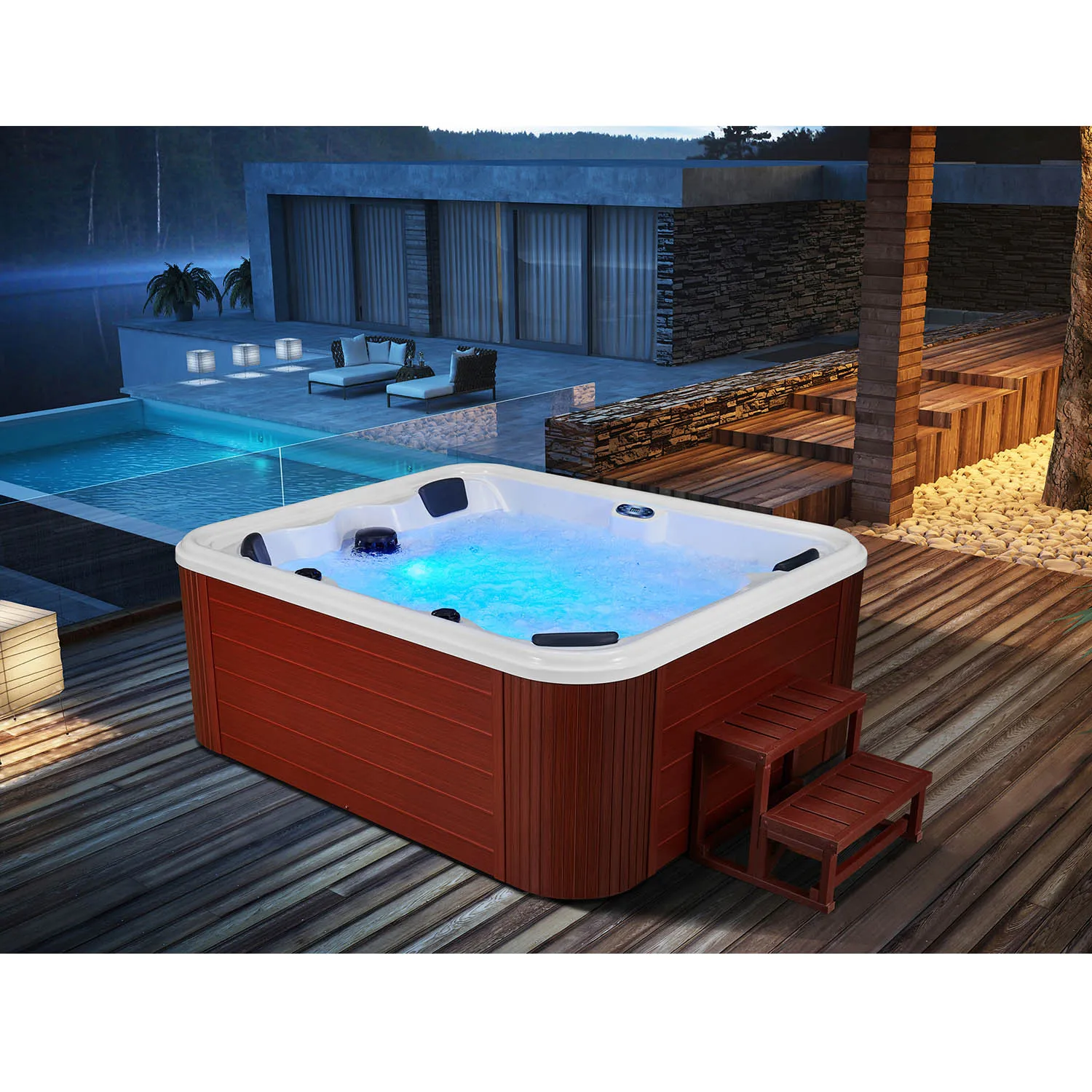
How long should the jets run in a hydromassage whirlpool tub?
While "running" is the correct answer, the duration and operating procedures need to be scientifically controlled.
General recommendations are as follows:
Steps | Operating Instructions | Duration |
| 1. Before adding the shock agent | Open the lid to ensure good ventilation | - |
| 2. Pour in the shock agent | Sprinkle evenly into the water, avoiding concentration in one area | - |
| 3. Run the injector | Open all nozzles to circulate and mix the water thoroughly | 15–30 minutes |
| 4. Allow the reaction to proceed | Close the sprayers and allow to stand to complete the chemical reaction | 2–4 hours |
| 5. Rinse and test | Check the chlorine concentration and pH level, ensuring balance is restored | - |
✅ Professional advice: 15–30 minutes is the ideal range for jet operation.
Too short a time will result in incomplete chemical distribution; too long a time may lead to excessive agitation, causing bubbles or excessive evaporation.
What are the precautions for operating the jets during shock?
While jet operation improves the shock effect, improper operation can also produce side effects. Here are some points to note:
1. Ensure the cap is open and well-ventilated
The flushing process releases chlorine or oxidizing gases. If the cap is tightly closed, these gases will remain inside, potentially corroding the cap liner or producing an irritating odor.
2. Avoid flushing at excessively high water temperatures
At water temperatures above 40°C, the oxidant decomposes faster, reducing its effectiveness.
Flushing is recommended within the range of 35–37°C.
3. Avoid human contact with the water
The chemical concentration is extremely high during flushing; do not immerse the person.
Wait at least 24 hours or until the chlorine concentration is below 3 ppm before use.
4. Do not mix multiple flushing agents simultaneously
Mixing chlorine-based and non-chlorine oxidants will trigger a chemical reaction; they must be used separately.
5. Run all nozzles and the filtration system
If some nozzles are closed, water circulation will be incomplete, leading to dead zones.
Should the jets be run again after flushing?
Yes, it is recommended to run the jet sprayer again briefly (5–10 minutes) after the initial flushing to thoroughly mix any remaining chemicals.
This step further:
• Promotes gas evaporation;
• Prevents chemical deposition;
• Allows the water to return to its natural balance.
The pH and chlorine concentration can then be checked to ensure suitability for another soak.
What are the consequences of not running the jet sprayer during flushing?
If the jet sprayer is not run during flushing, the following problems may occur:
• Uneven distribution of the flushing agent, resulting in ineffective disinfection;
• Localized over-oxidation of the water, damaging surface materials;
• Incomplete removal of bacteria from inside the pipes;
• Chemical deposition forming spots or discoloration;
• Slower water quality recovery, with persistent chloramine residue.
Therefore, not running the jet sprayer not only affects the effectiveness but may also cause equipment damage and additional maintenance costs.
Optimal Combination of Flushing Frequency and Jetting Operation: The flushing frequency of a hydromassage whirlpool tub typically depends on the frequency of use and the number of people. Here are general recommendations:

Post-Hydromassage Whirlpool Tub Inspection and Maintenance Steps
After completing the shock treatment and run the jets, the following inspections must be performed:
1. Check chlorine or bromine concentration
• Ideal values: Chlorine 1.5–3 ppm; Bromine 3–5 ppm.
2. Check pH value
• Ideal range: 7.2–7.6.
3. Clean the filter
• The filter should be flushed or replaced after the shock treatment to prevent clogging by residue.
4. Recirculate the system
• Re-run the jets for 5–10 minutes to ensure the water returns to equilibrium.
This will allow the water quality in the hydromassage whirlpool tub to quickly return to optimal levels.
Running the jets during the shock treatment is an essential step
✅ Running the jets is necessary during the shock treatment.
Because it can:
• Ensure even distribution of the shock agent;
• Improve oxidation reaction efficiency;
• Clean the piping system;
• Prevent chemical buildup;
• Accelerate water quality recovery.
By following the scientific procedure—turning on the jet for 15–30 minutes during shock, allowing the reaction to stand, and then testing the water quality—your hydromassage whirlpool tub will remain clean, safe, and efficient.
Can Your Factory Customize Sauna Rooms or Steam Bathrooms for Specific Market Needs?
Absolutely. Yuehua is well-known for its flexibility in designing sauna room and steam bathroom solutions, especially for clients needing private label or region-specific modifications. Our woodworking division, staffed with professional craftsmen, produces precise custom cabinetry and structural components.
This allows customers to request Buy-to-order products with unique layouts, upgraded materials, or personalized brand elements.
You can submit your requirements, and our team will prepare detailed quotes for mass production or prototype evaluation.

